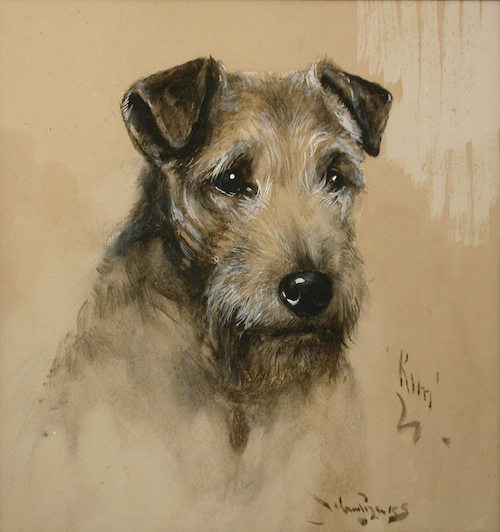
There is no template for the kind of person who creates and/or preserves a breed, be it a tax collector (Karl Friedrich Louis Dobermann) or hospice monks (the Saint Bernard monastery). Key figures in the Lakeland Terrier’s history included a group of gunpowder makers at Elterwater in the 1850s and a bobbin maker named Tommy Dobson, who was also master of the Eskdale Foxhounds. “Lakies” were developed to bolt large, aggressive Westmoreland foxes out of their dens, critters who could devastate a flock of sheep, especially during lambing season. In those days, the breed was known by a number of names, including the Elterwater, Patterdale, Cumberland Terrier, Westmoreland Terrier, Colored Working Terrier, and most often as the Fell Terrier, and it wasn’t formally recognized as the “Lakeland Terrier” until 1921.
That this is a breed with “pluck” is undisputed. Stories are legend of Lakeland Terriers emerging alive after being underground for days, some for as long as ten days in pursuit of a prey within its burrow. One legendary story from the early 19th century tells of a Lakeland Terrier belonging to Lord Lonsdale who burrowed twenty-three feet under solid rock in pursuit of an otter. It took a team of men performing blasting operations into the rock over the course of three days to extract and rescue the little dog. Sadly, not all Lakies have been as lucky, and there are accounts of some dogs never have been recovered. This is not a “sissy” dog, nor a dog for the faint of heart.
Image: “Lakeland Terrier, ‘Rum,’ by Reuben Ward Binks (1880-1950)
